(411) I walked along Tsukuba-michi (2)
文字数 3,538文字
In this chapter, I’ll introduce the “Okoshi Residence”, a former inn. It is an old folk house that was used as an inn during the Meiji period about 150 years ago. The house had been vacant for many years since then.
From 2004 to 2005, the students from Kogakuin University's Goto Lab looked into renovating the residence.
In 2008, at the first "Tsukubasan Autumn Festival", the first floor of the residence was opened to the public as the "Tsukubasan Chaya(Cafe)." From then on, part of the Okoshi Residence had been open to the public every year during the autumn festival until 2012.
From 2013 to 2019, the “Okoshi Residence Project'' was carried out mainly by students from Hosei University's Akamatsu Lab (Akamatsu Kazuko). The Okoshi Residence was the mansion of the grandfather of Sugihara Yukiko, one of the first-generation students of Akamatsu lab.
The project, with the cooperation of the owner, Okoshi Nobuo, the Tsukuba Women's Association, the Tsukuba Olive Club, and the Tsukubasan Autumn Festival Executive Committee, turned the Okoshi Residence into a resting place for people who visit the shrine or climb Mt. Tsukuba during the festival.
The Akamatsu Lab students thoroughly cleaned the remaining rooms (except for cafe) that had been left alone. They also created a more comfortable cafe space using old desks and cushions that were left in the residence.
In 2013, they held a “Light and Shoji Workshop'' during the festival period to revive the tattered shoji screens on the second floor. At the workshop, visitors were asked to paste their favorite shoji paper to complete the shoji on the second floor.
(※ ”shoji” means a paper sliding door.)
Since then, they’ve restored the dirt floor and renovated the handrails on the stairs.
During the spring festival in 2018, the students of the University of Tsukuba's Architecture and Regional Planning Lab held a “Fukuremikan Tour.'' In the fall of the same year, the Akamatsu Lab co-hosted the "Fukuremikan Tour."
(※Fukuremikan (福来みかん) are mandarin oranges that are so small that they can easily fit on the tips of your fingers. They are cultivated near Mt. Tsukuba.)

① If you follow the Tsukuba-michi, you’ll see the Okoshi Residence.
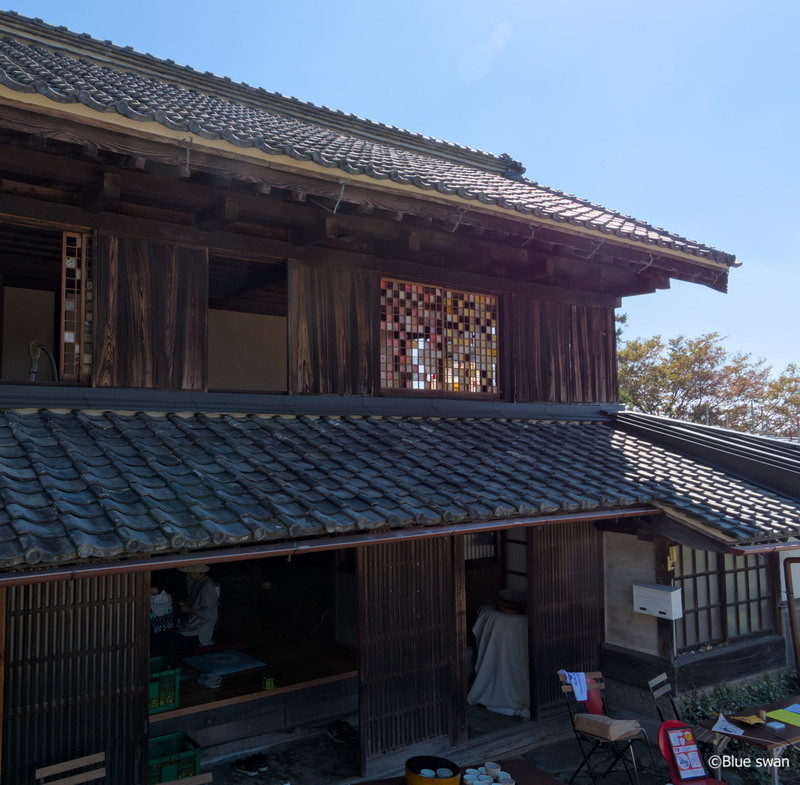
② This is a close-up photo of the Okoshi Residence. The window on the second floor is impressive, isn’t it?
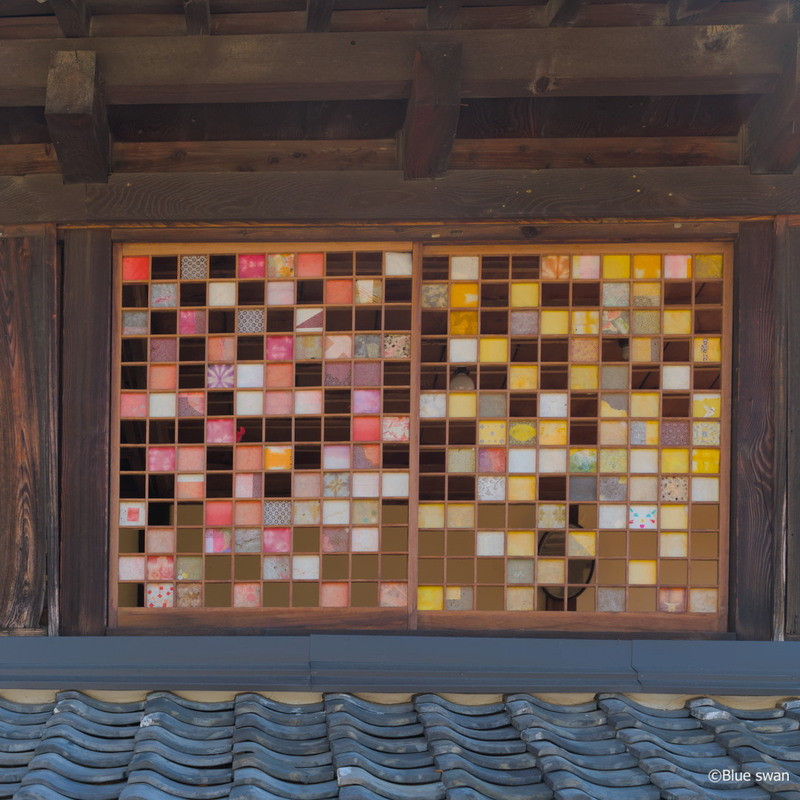
③ This is a shoji screen on the second floor.
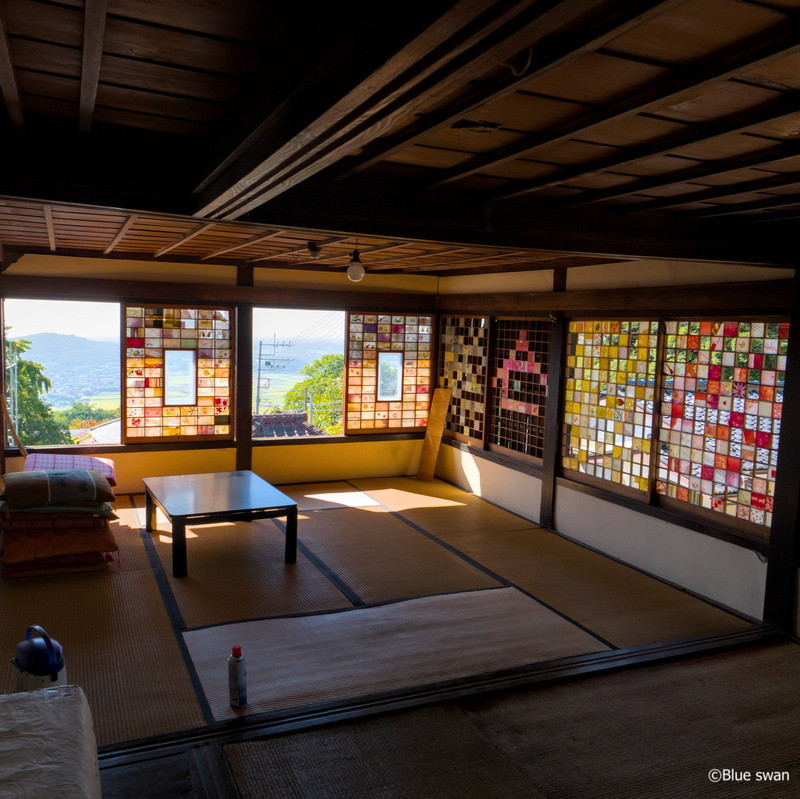
④ The first floor is a rest area (cafe), but it was crowded, so we were shown the rest area on the second floor.
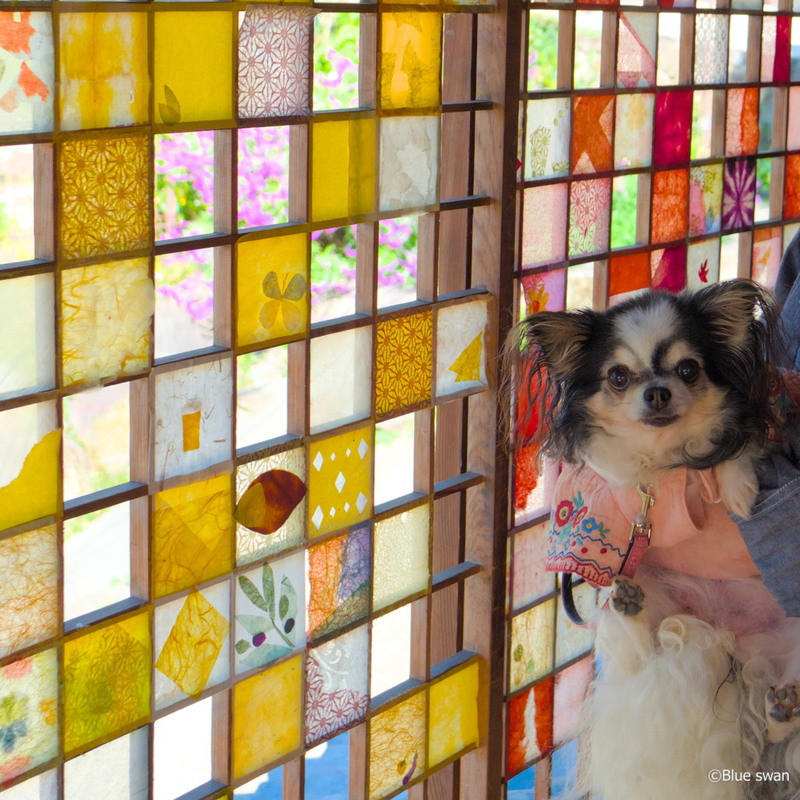
⑤ I am in front of shoji screens on the second floor. These shoji screens were revived at the “Light and Shoji Workshop'' and are called “Japanese stained glass.''
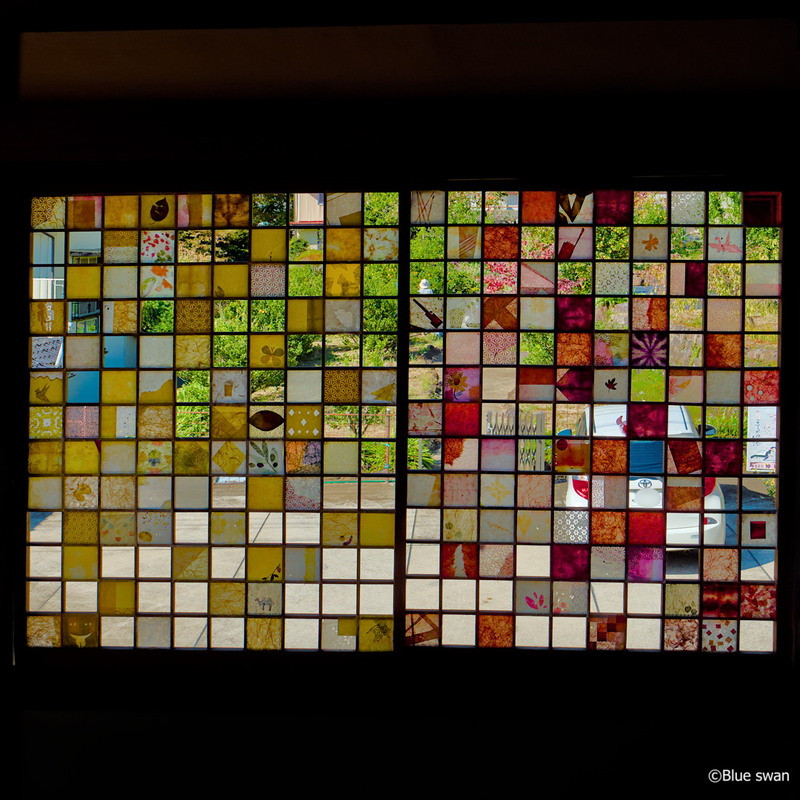
⑥ These are called “Akari shoji (bright shoji screen)”.
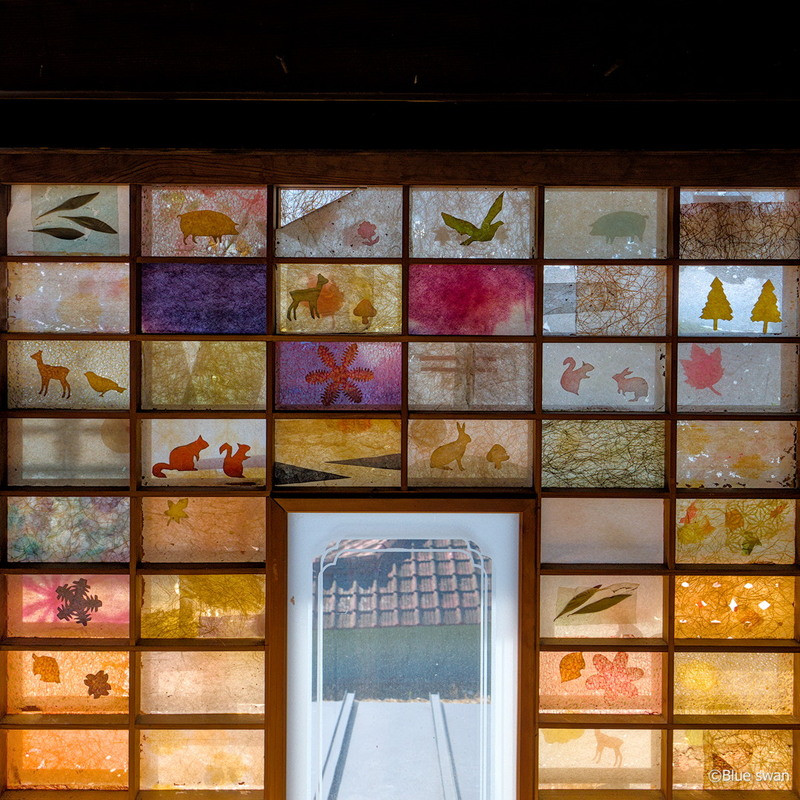
⑦ This is a close-up photo.

⑧ At the entrance, there is a flag saying "Fukuremikan Tour". With this flag, the staff will guide tour participants from the bus stop in front of Tsukuba Shrine.
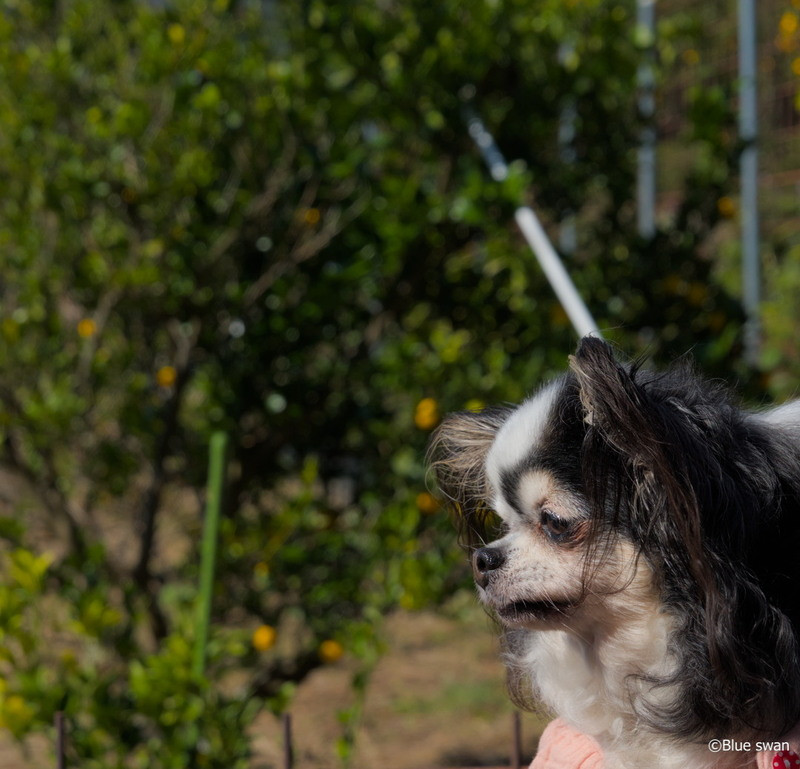
⑨ I am in front of the Fukuremikan.
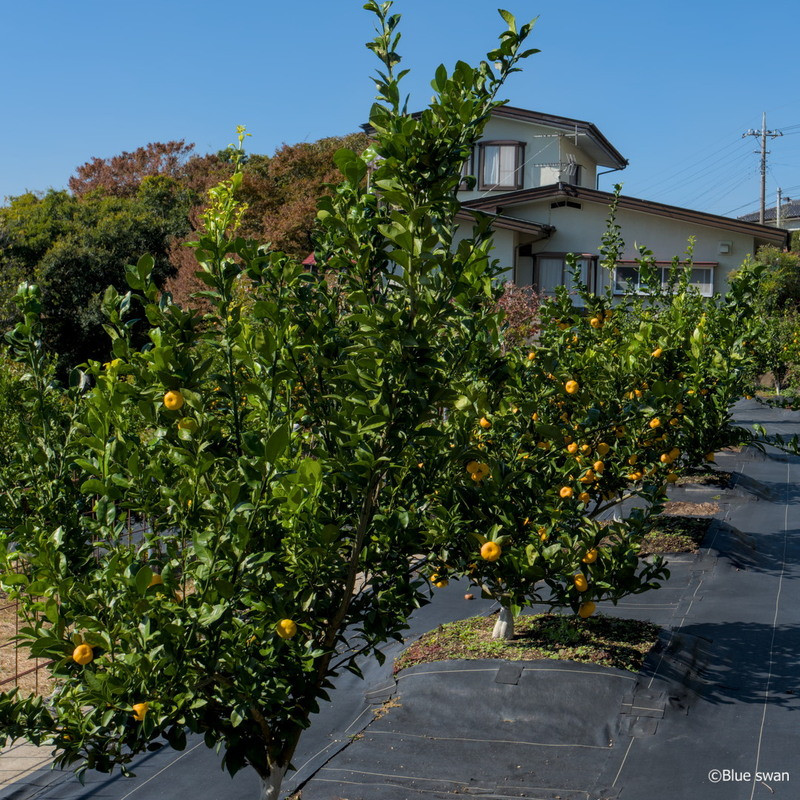
⑩ These are Fukuremikan. They are a native species around Mt. Tsukuba, and have a strong aroma and sour taste. Their peels are mainly used to make seven-spice seasoning mix (七味唐辛子).
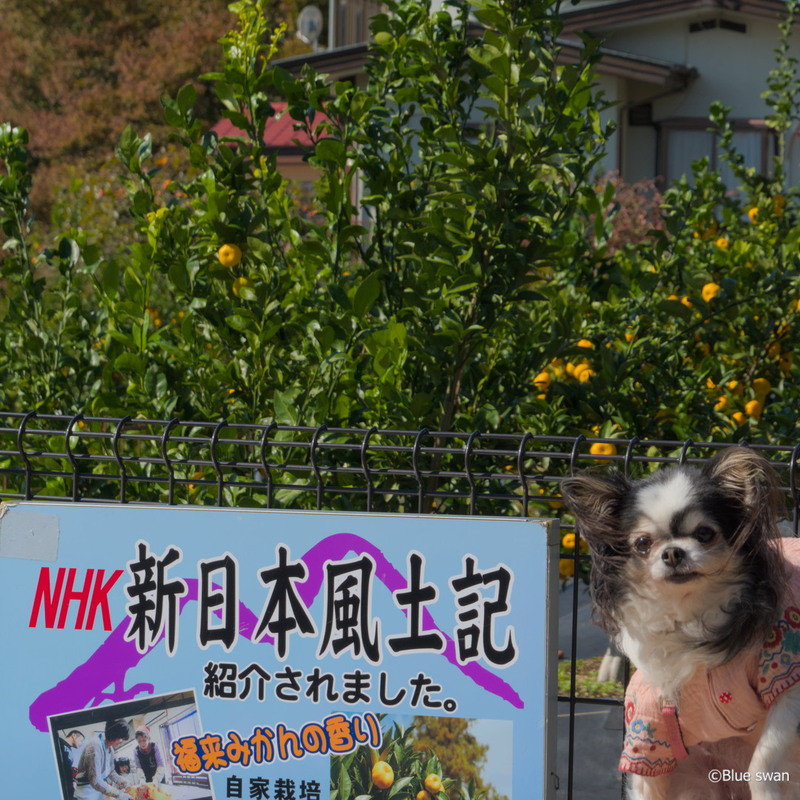
⑪ I am in front of the Fukuremikan information board. Now, we’ll return along the Tsukuba-michi.
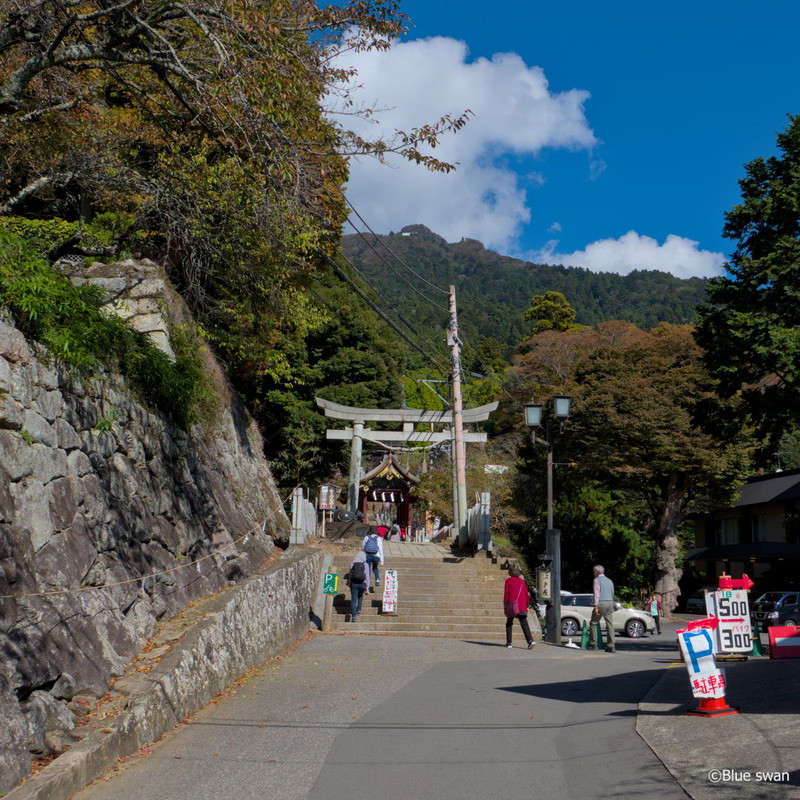
⑫ You can see the second torii gate from Tsukuba-michi.
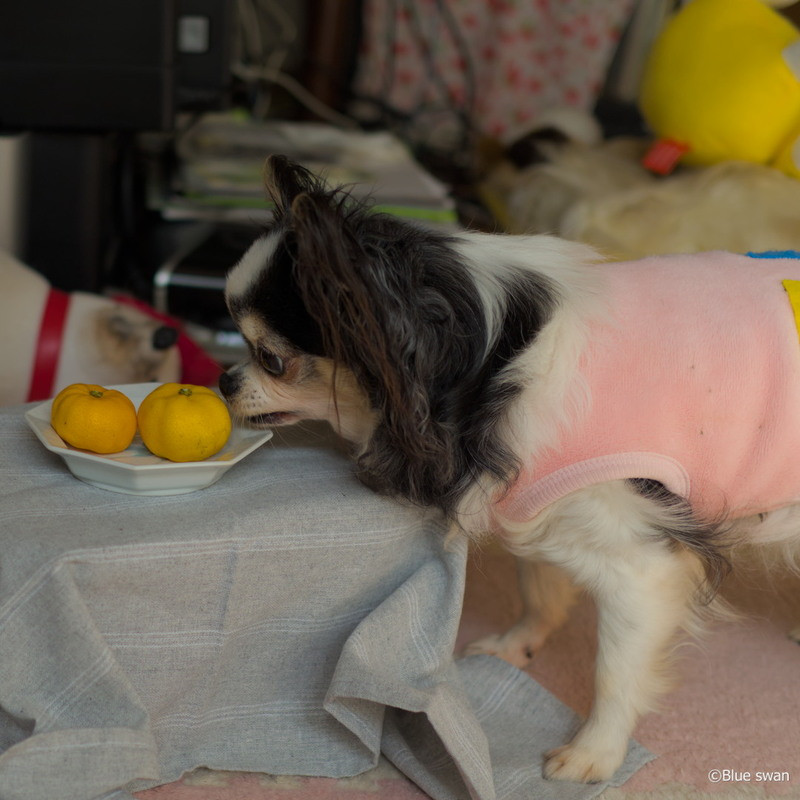
⑬ I'm sniffing the Fukuremikan (mandarin oranges) which the staff at Okoshi Residence gave us.
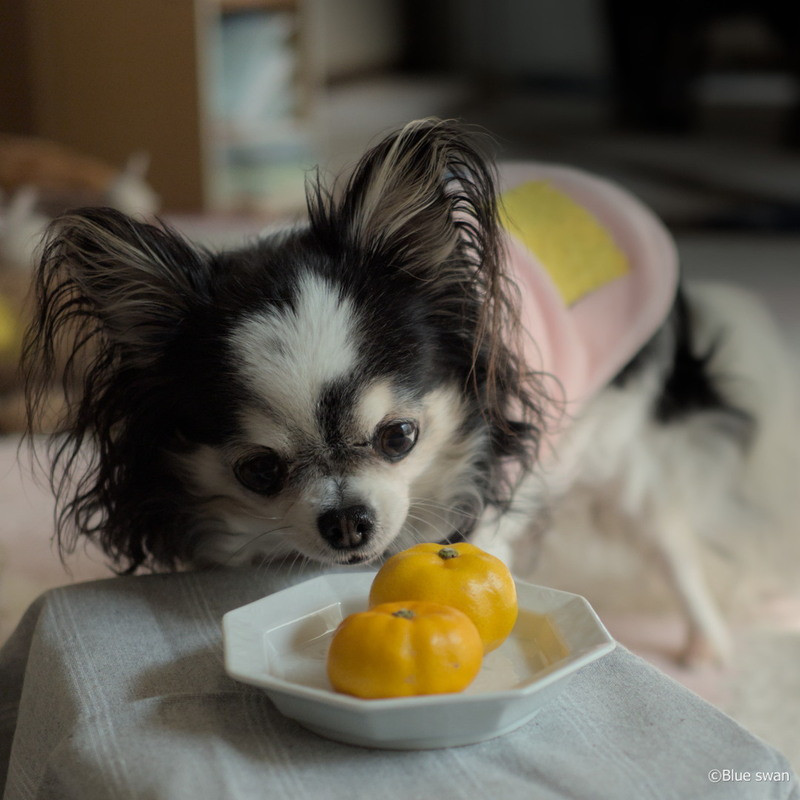
⑭ I’m carefully examining the Fukuremikan.
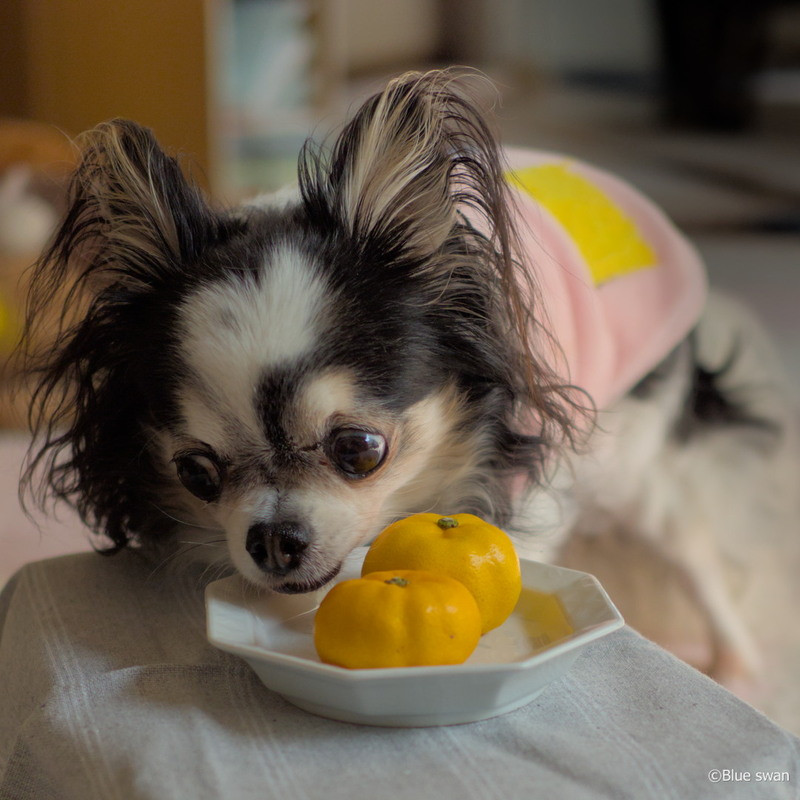
⑮ I am surprised by the strong scent of the Fukuremikan.
From 2004 to 2005, the students from Kogakuin University's Goto Lab looked into renovating the residence.
In 2008, at the first "Tsukubasan Autumn Festival", the first floor of the residence was opened to the public as the "Tsukubasan Chaya(Cafe)." From then on, part of the Okoshi Residence had been open to the public every year during the autumn festival until 2012.
From 2013 to 2019, the “Okoshi Residence Project'' was carried out mainly by students from Hosei University's Akamatsu Lab (Akamatsu Kazuko). The Okoshi Residence was the mansion of the grandfather of Sugihara Yukiko, one of the first-generation students of Akamatsu lab.
The project, with the cooperation of the owner, Okoshi Nobuo, the Tsukuba Women's Association, the Tsukuba Olive Club, and the Tsukubasan Autumn Festival Executive Committee, turned the Okoshi Residence into a resting place for people who visit the shrine or climb Mt. Tsukuba during the festival.
The Akamatsu Lab students thoroughly cleaned the remaining rooms (except for cafe) that had been left alone. They also created a more comfortable cafe space using old desks and cushions that were left in the residence.
In 2013, they held a “Light and Shoji Workshop'' during the festival period to revive the tattered shoji screens on the second floor. At the workshop, visitors were asked to paste their favorite shoji paper to complete the shoji on the second floor.
(※ ”shoji” means a paper sliding door.)
Since then, they’ve restored the dirt floor and renovated the handrails on the stairs.
During the spring festival in 2018, the students of the University of Tsukuba's Architecture and Regional Planning Lab held a “Fukuremikan Tour.'' In the fall of the same year, the Akamatsu Lab co-hosted the "Fukuremikan Tour."
(※Fukuremikan (福来みかん) are mandarin oranges that are so small that they can easily fit on the tips of your fingers. They are cultivated near Mt. Tsukuba.)

① If you follow the Tsukuba-michi, you’ll see the Okoshi Residence.

② This is a close-up photo of the Okoshi Residence. The window on the second floor is impressive, isn’t it?

③ This is a shoji screen on the second floor.

④ The first floor is a rest area (cafe), but it was crowded, so we were shown the rest area on the second floor.

⑤ I am in front of shoji screens on the second floor. These shoji screens were revived at the “Light and Shoji Workshop'' and are called “Japanese stained glass.''

⑥ These are called “Akari shoji (bright shoji screen)”.

⑦ This is a close-up photo.

⑧ At the entrance, there is a flag saying "Fukuremikan Tour". With this flag, the staff will guide tour participants from the bus stop in front of Tsukuba Shrine.

⑨ I am in front of the Fukuremikan.

⑩ These are Fukuremikan. They are a native species around Mt. Tsukuba, and have a strong aroma and sour taste. Their peels are mainly used to make seven-spice seasoning mix (七味唐辛子).

⑪ I am in front of the Fukuremikan information board. Now, we’ll return along the Tsukuba-michi.

⑫ You can see the second torii gate from Tsukuba-michi.

⑬ I'm sniffing the Fukuremikan (mandarin oranges) which the staff at Okoshi Residence gave us.

⑭ I’m carefully examining the Fukuremikan.

⑮ I am surprised by the strong scent of the Fukuremikan.
